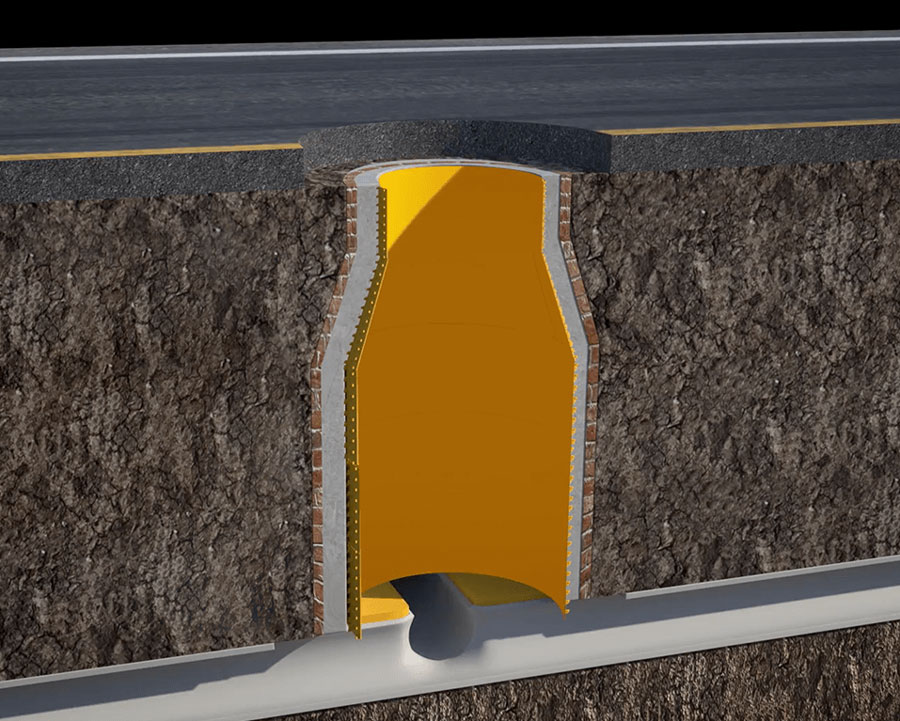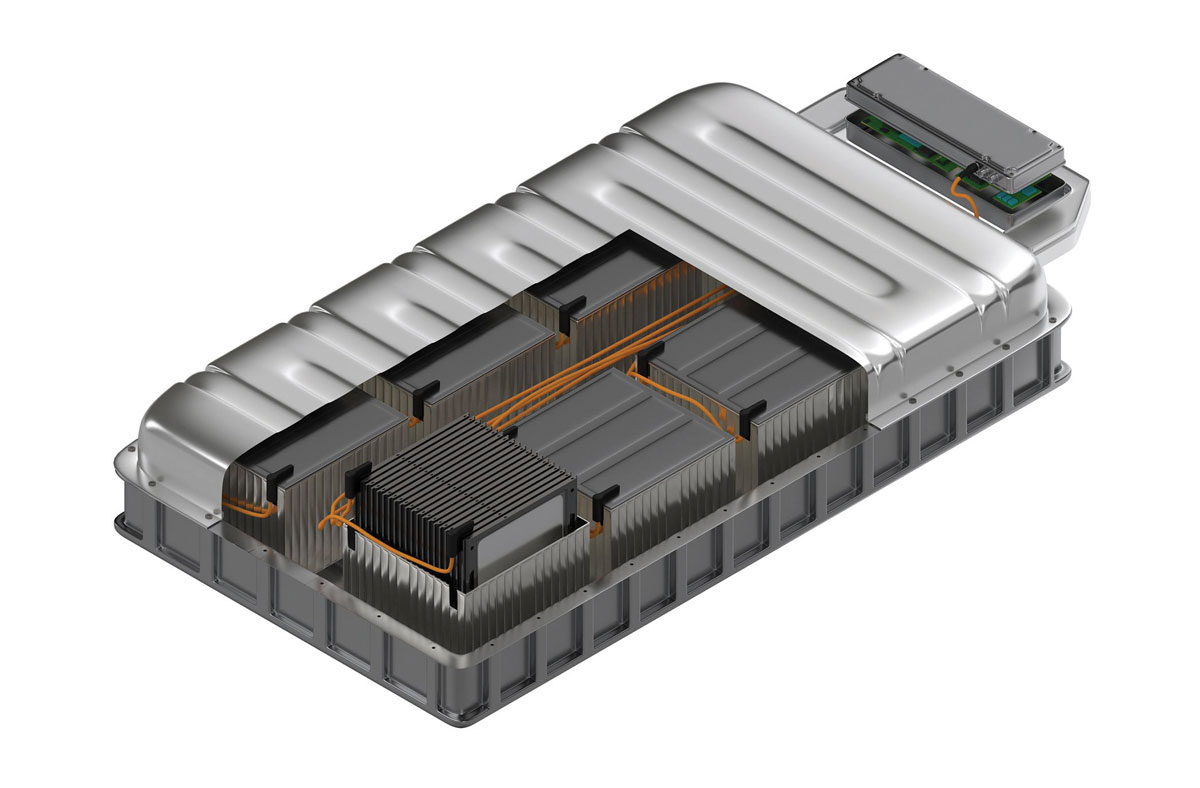
Design and fabrication firm Dimensional Innovations developed and built the tallest 3D printed structure ever made using their Thermwood LSAM 1020 large scale additive manufacturing system. The result is the 93-foot tall commemorative Al Davis Memorial Torch in the Las Vegas Allegiant Stadium, the new home of the Raiders NFL team. What is not apparent is the amount of new, cutting-edge technology that was required to create this torch.
Dimensional Innovations developed a unique way of simulating flames using a mix of light and fog for a realistic effect. Even though they were not experienced in large scale 3D printing, they are a longtime CNC router customer of Thermwood Corporation. Dimensional Innovations approached Thermwood to see if they could produce the effects they wanted for the torch using the Thermwood large-scale additive manufacturing (LSAM) technology. It looked feasible, so they printes some full-size test panels using Thermwood’s demonstration machine.
Most of Thermwood’s business prior to this project was printing large high temperature molds and tooling for aerospace companies. The largest structure made on their equipment previously was the chassis of an autonomous bus and some concrete forms. This project was much larger.
The test panels looked promising, but would a carbon fiber reinforced composite structure of this size be structurally solid and strong enough? To answer that question, they turned to Purdue University’s Composites Manufacturing and Simulation Center. During development of Thermwood’s large scale additive manufacturing technology, Purdue worked closely with Thermwood and polymer supplier Techmer PM, so Purdue already had extensive data on structures printed on Thermwood’s system using Techmer material.
After the calculations and simulations, it was determined that Techmer’s carbon fiber reinforced polycarbonate material would result in a structure that was more than adequate and was the ideal material to use. At this point, Dimensional Innovations ordered a Thermwood LSAM 1020 system and the polycarbonate.
Now it was time to print. This was a test of a lot of new technology. Although Thermwood had sold and installed many machines, none would be pushed like this application. The machine would have to run almost continuously for the better part of a year, making good parts the entire time.
It worked: The machine printed and machined 225 separate structures, no two the same, each weighing about 350 pounds that fit together perfectly using 100,000 pounds of composite polymer. When it was assembled on-site, 1,148 formed and polished aluminum panels, each one different, were added to the 3D-printed structure as an outside skin.
This was also a test of another new technology: Thermwood’s LSAM Print 3D software was used to generate the CNC programs required to print the entire project. This was the first time the software was used for a project this extensive.
This project pushed the limits of today’s additive manufacturing technology and was possible because of the vision of Dimensional Innovations and their collaboration with Thermwood Corporation. www.thermwood.com.

AGRU America, Inc. and HK Solutions Group announced the release of Monoform PLUS™, a comprehensive manhole rehabilitation solution that offers streamlined installation with minimal impact on local traffic. Manhole rehabilitation is a process that protects and reinforces existing sewage manholes rather than replacing them.
“Monoform PLUS joins HK Solutions’ suite of manhole rehabilitation solutions, providing customers with an option for protection against corrosion through the integrated Ultra Grip liner,” said Wade Anderson, president and CEO of HK Solutions Group. “Our collaboration with AGRU enables us to deliver Monoform for applications where standing water and high hydrogen sulfide concentrations would otherwise deteriorate concrete manholes and other structures.”
The solution offers equal performance and design life compared with a typical replacement job, but comes with numerous benefits including minimal traffic disruption, improved cost-effectiveness, faster installation, no required external bypass pumps and no compaction issues. Monoform PLUS is a 100 percent structural solution that is also corrosion resistant due to its use of Ultra Grip. Most manholes can be completely rehabilitated in two days without being taken out of service.
“We are excited by this novel application of Ultra Grip in creating a new manhole rehabilitation solution,” said Robert Johnson, president and CEO of AGRU America, Inc. “Our collaboration with HK Solutions Group has been mutually beneficial and we are especially proud of this milestone and its potential to improve municipal rehabilitation.” www.agruamerica.com.

Arkema materials are being used in applications from cell to module and battery pack assembly up to battery system integration into the vehicle. To address the fast-growing demand for materials in batteries, Arkema accelerated its investments and mobilized its research capacities. Arkema is supplying materials for the following applications.
At the heart of each cell:
- Although characterized as an inactive material, the Kynar® PVDF HSV cathode binder is an active material in the electrode at various stages. As a key enabler in electrode manufacturing, its design allows for outstanding performance throughout the cell’s life.
- Kynarflex® LBG series is the “to go” solution for an efficient coating when it comes to separators and achieving the goal of outstanding adhesion with the electrodes for better performance. This technology can be used in solvent- or water-based coatings.
- Foranext® ultra-pure electrolyte salts, more stable at high voltage than current solutions, help to reduce the battery’s charging time and increase its autonomy.
- Graphistrength® carbon nanotubes, added to the cathode in small quantities, help the flow of electrons to the anode and reduce battery charge time.
Inside the modules:
- Rilsan® polyamide 11, 100 percent bio-based from sustainable castor plant, provides electrical insulation in thin layer of intercell cooling plates.
- Piezotech® piezoelectric polymers are used as actuators for sensors monitoring the level of battery charge.
- Bostik® specialty adhesives, adapted for the cell assembly of all different cell types, are used to attach cells to each other and to the module or pack casing,
For thermal management:
- Rilsan polyamide 11 is widely used for battery cooling lines, which require good thermal control to ensure optimal performance and durability of the battery. Tubes made of Rilsan Polyamide 11 allow the transfer of cooling liquid to and from the radiator and battery pack. Rilsan Polyamide 11 combines mechanical strength, durability and easy assembly to the battery.
- Bostik Thermal conductive gapfillers and adhesives ensures efficiency and durability of lithium-ion batteries by transferring the heat in the battery system to maintain optimized temperature levels guaranteeing reliable and long-term battery operations.
For battery management system:
- Rilsan polyamide 11, used as a protective coating for busbars, can be offered as powder for metal coating application or as pellets for crosshead extrusion and injection application. It offers electrical insulation, thermal resistance and bendability. Busbars, which link modules to each other, are used instead of flexible cables to make the battery more compact.
- Bostik encapsulation adhesives for electronic components, based on hot melt polyamide and UV cyanaocrylate technologies, provide protection from any damage for the most sensitive electronics, for low-pressure molding processes and conformal coating applications.
For battery assembly:
- Bostik battery pack sealing and gasketing adhesives ensure the safe and reliable enclosure of the pack, helping to meet its overall performance needs for temperature resistance and sealing, while providing the option to be removed to enable repair and recycling.
- Bostik structural adhesives are used to assemble the battery pack housing and other types of components for and in the battery pack, such as the cooling plate.
For the protection pack:
- Elium® thermoplastic resin, used as a high-performance composite matrix, is the preferred choice of a growing number of manufacturers for the battery pack as an alternative to steel, in comparison to which it presents a considerable weight advantage.
- Kepstan® PEKK, thanks to its light weight and outstanding resistance, offers a high-end battery pack protection solution.
- Bostik battery pack lamination adhesives, used to laminate an aluminum foil onto the composite battery pack to ensure EMI shielding protection, complete the solution offer for battery pack light weight designs.